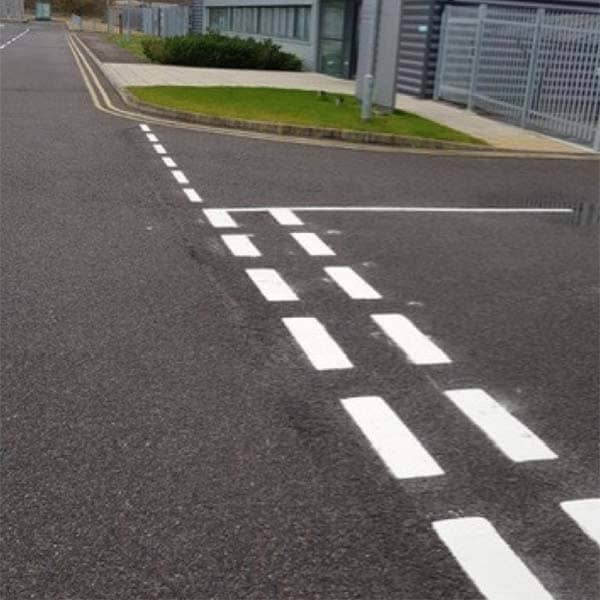STOP lines at STOP signs
A STOP line at a STOP sign is an unbroken white line across the carriageway at a junction. These lines are usually found at busy junctions (in place of give-way markings), and often where there is a high rate of accidents.
The important point to remember about STOP lines is that you MUST stop until it is safe to move on or to enter the junction, and do not use the line as you would a give-way marking.
Give way lines on major roads
Give way lines on major roads are double-broken white lines across the carriageway at junctions. They’re simply to tell you to give way to traffic already on the road before entering the main carriageway.
Give way lines at major roundabouts
These broken, single (usually) white lines will be found across the junction at major roundabouts, and are there to warn drivers to give way to the right before entering the roundabout.
Give way lines at mini-roundabouts
Similar to give-way lines at major roundabouts, give-way markings at mini roundabouts are broken (usually) white lines, but thicker or ‘chunkier’ than those you’d find at major roundabouts.
Edge lines
As the name suggests, you’ll find this unbroken white road line marking at the edge (the left-hand side) of the road. Their function is to warn drivers where the edge of the road is, and are often ribbed to give drivers a physical warning.
Edge lines will mostly be found on dimly-lit roads prone to fog or mist, or where the width of the road suddenly changes, to help drivers maintain a safe and lateral position on the carriageway.
Centre lines
Centre lines, as the name suggests, are broken white lines down the centre of the road. Centre lines sometimes vary in length, and in the size of the gap between each line, depending on the road's speed limit.
Hazard warning lines
Like centre lines, hazard warning lines are broken white lines, with the key difference of the lines being longer than the gaps between them. The key purpose of these lines is to warn drivers of impending or concealed hazards, such as sharp bends, a junction, or a narrowing of the carriageway.
Loading restriction lines
Loading restriction lines vary, but in general:
- Double yellow lines across the kerb mean loading is restricted at ALL TIMES.
- Single yellow lines across the kerb mean loading is restricted at certain times.
Box junctions
You’ll find box junctions (an area of crisscrossed yellow lines) at major intersections. A box junction's function is to warn drivers not to enter the junction unless their exit is clear, although – if you’re turning right and are only stopped by oncoming traffic, you can wait inside a box junction.
KEEP CLEAR markings
KEEP CLEAR markings are one of the most obvious road line markings and simply state in large lettering ‘KEEP CLEAR’, and unlike box junctions, you MUST NOT stop on KEEP CLEAR markings under any circumstances.
Road Marking Contractors
If you’re looking for a professional road marking contractor working throughout the UK, contact City Road Markings, one of the UK's leading road line marking and pavement markings specialists.
